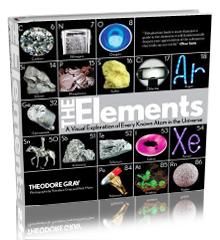Temperature compensating pendulum. | |||
| Sample Image | Spin Video | QuickTimeVR Rotation | |||
| Temperature compensating pendulum. To keep accurate time, a pendulum clock needs a pendulum whose center of gravity remains constant. Unfortunately when the metal shaft of a pendulum warms up, it expands, shifting the center of gravity down and causing the clock to run slow. To compensate for this, glass vials containing mercury can be placed at the bottom of the pendulum. Not only is mercury nice and heavy, making for a good solid pendulum, it also expands more than most other metals on heating. Thus as the pendulum warms up the bottom of the vials moves down (because the shaft gets longer) but the mercury gets taller, shifting the center of gravity back up where it belongs. How much more accurate this made a clock I don't know: In any case a cheap electronic clock now is vastly more accurate than any of these ever were. Source: eBay seller proclocks Contributor: Theodore Gray Acquired: 5 October, 2004 Price: $86 Size: 4" Purity: 99% | |||
|

